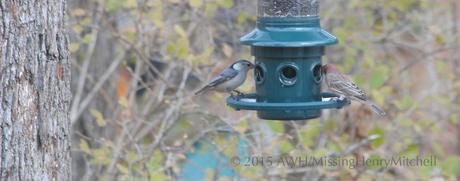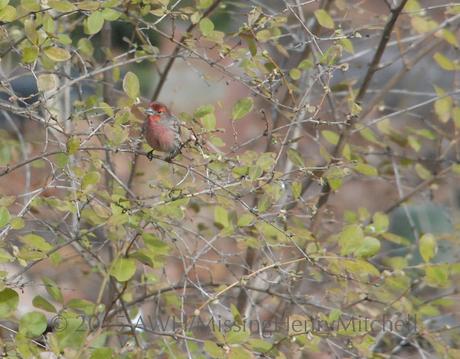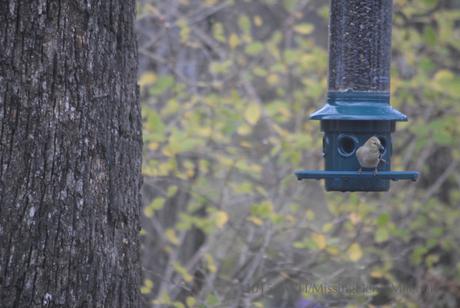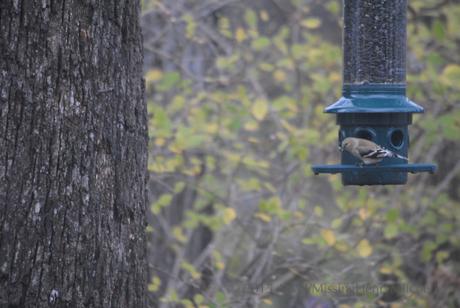Two weeks ago, we received an inch of ice at the MHM garden. Because it’s the South, and we have no snow-and-ice infrastructure, life shut down until we thawed. I think the only thing that kept me sane (a housebound beagle and two kids out of school were decidedly unhelpful in that mission) was the birdfeeder in the back yard.

White-breasted Nuthatch (Sitta carolinensis ) and House Finch (Haemorhous mexicanus)

House finch (Haemorhous mexicanus)
I’m dependent on Merlin Bird ID to tell me who my visitors are. This app, created by the Cornell Lab of Ornithology, offers a brilliant beginners’ guide to identifying local birds.

American Goldfinch (Spinus tristis), showing his winter coat. His spring-and-summer one is much livelier.
I keep my feeder filled with black oil sunflower seeds, which is what they want to seem to eat. These seeds pack protein and fat into a very small, easy-to-shell package. When the temperature plummets, birds need these extra calories to maintain energy and stay warm. And when berries and fallen seed may be encapsulated in ice, a full feeder can make a big difference in birds’ ability to survive.
As the weather warms and more plants come into bloom, I will taper back on the feed to encourage them to scavenge insects from the garden. I hope that they’ll be enough in the habit of visiting my garden that they’ll stick around and enjoy the buffet.

American Goldfinch, showing his distinctive wing markings.

